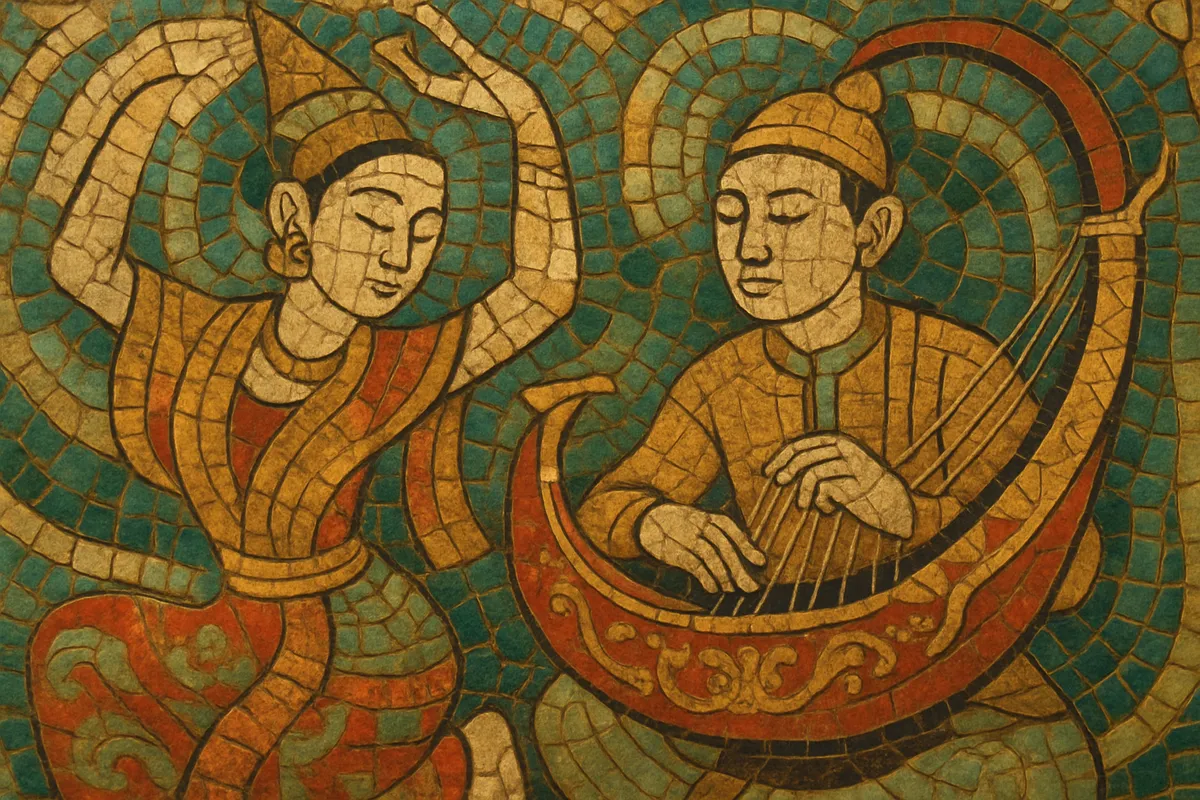Burmese classical music (Mahāgīta) is the refined court and chamber tradition of Myanmar, crystallized during the late Konbaung dynasty. It centers on an ornate vocal repertoire accompanied by distinctive Burmese instruments and cyclical rhythmic designs.
Core timbres come from the saung gauk (arched harp), pattala (bamboo xylophone), hne (double-reed shawm/oboe), pat waing (drum circle), a small gong-chime battery, and timekeeping idiophones such as si and wa. Textures are typically heterophonic: a lead melody is embellished simultaneously by multiple instruments, each tracing the line with personal ornamentation.
Melodically, the tradition uses flexible heptatonic/pentatonic frameworks and microtonal inflections rather than functional harmony. Rhythm is organized into recurring cycles articulated by percussion, with rubato and tempo breathing around the vocal line. Poetry in classical Burmese—on courtly love, nature, seasons, and Buddhist values—shapes phrasing and expressive nuance.
Burmese classical music has deep roots in royal and temple culture dating back many centuries, but the core repertoire known as Mahāgīta coalesced during the Konbaung dynasty (18th–19th centuries). Court patronage standardized genres of songs and dance-theatre pieces, refined instrumental technique, and formalized performance practice.
Cross-cultural exchange was pivotal. Contact with neighboring courts—especially Ayutthaya/Siam—introduced melodic types remembered in Myanmar as "Yodaya" tunes. Earlier currents from Indic musical thought and regional Southeast Asian court ensembles also contributed to the idiom.
Nineteenth-century poet-composers and court musicians compiled, adapted, and extended the repertoire. Distinguished figures such as Myawaddy Mingyi U Sa and U Ponnya helped encode poetic meters, melodic contours, and performance conventions. The saung gauk (arched harp) emerged as a signature chamber instrument, while the hsaing waing (outdoor percussion-and-oboe ensemble) shaped theatre and ceremonial contexts.
Under colonial rule, court support waned, but the tradition persisted through theatrical troupes, monasteries, private salons, and later radio. Masters documented tunings and pieces, trained disciples, and adapted to recording technologies, keeping Mahāgīta alive in changing social settings.
In the late 20th and early 21st centuries, master musicians, scholars, and diaspora ensembles renewed interest, teaching at universities and performing internationally. Today, Burmese classical music thrives in both traditional settings and intercultural collaborations, with careful preservation of vocal poetry, ornamentation, and cyclical rhythmic practice.


